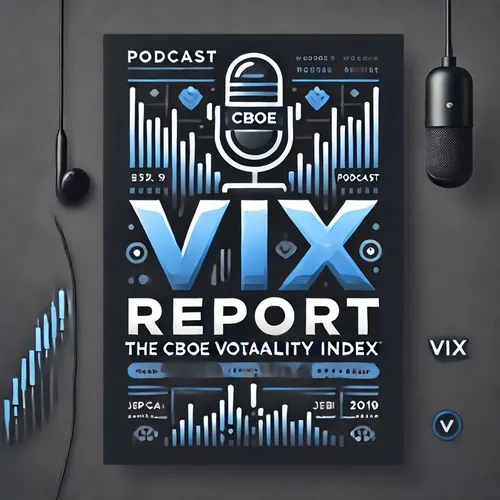Mild Uptick in VIX Signals Slight Increase in Market Risk Perception
- Author
- QP-1
- Published
- Tue 19 Aug 2025
- Episode Link
- https://www.spreaker.com/episode/mild-uptick-in-vix-signals-slight-increase-in-market-risk-perception--67443565
The Cboe Volatility Index, commonly known as the VIX, is currently quoted at 15.19 as of August 19, 2025. This represents a percent change of 1.33% higher from the previous closing level of 14.99, according to data directly from the Cboe's dashboard. The movement comes after several days of relatively stable readings, with the VIX closing at 14.99 on August 18 and oscillating within the mid-14 range over the past week.
The VIX measures the market's expectation of 30-day forward-looking volatility, derived from the prices of S&P 500 index options. This means that a higher VIX reflects greater anticipated volatility, often linked to market uncertainty or increased risk aversion among investors.
A percent increase of 1.33% in the VIX today suggests a mild uptick in perceived short-term market risk compared to last session. Looking at recent trends, the VIX has hovered near the lower bound of its 52-week range, which peaked at 60.13 and dropped as low as 12.70 during the year. This low-volatility regime indicates that the broader market remains relatively calm by historic standards.
Driving today’s VIX movement are primarily modest changes in overall investor sentiment rather than any single outsized event. There has been no major shock to equity markets or headline economic data that would drive a sharp volatility spike. Instead, traders may be reacting to incremental changes such as earnings releases, Fed commentary on interest rates and inflation, or fluctuations in global risk sentiment. Macrotrends and FRED both show similar patterns: slight day-to-day movements in the VIX in the past week, echoing a market that is neither panicked nor complacent.
Historically, the VIX exhibits mean-reversion, a tendency to return to a longer-term average as risk perceptions normalize. When the index remains subdued, as it has in recent months, market participants often turn their attention to events with the potential to disrupt the current calm—such as central bank meetings, major geopolitical headlines, or large shifts in economic data. Portfolio managers might use this period of low implied volatility to recalibrate hedging strategies with VIX futures or options, a common use case noted by the Cboe.
It's also important to note the broader context: The S&P 500 remains near all-time highs, inflation indicators are relatively steady, and the Federal Reserve's policy trajectory appears well telegraphed to markets. As a result, realized market volatility has stayed low, keeping the VIX in check.
Thank you for tuning in and make sure to come back next week for more insights. This has been a Quiet Please production, and for more, check out QuietPlease.ai.
For more http://www.quietplease.ai
Get the best deals https://amzn.to/3ODvOta
